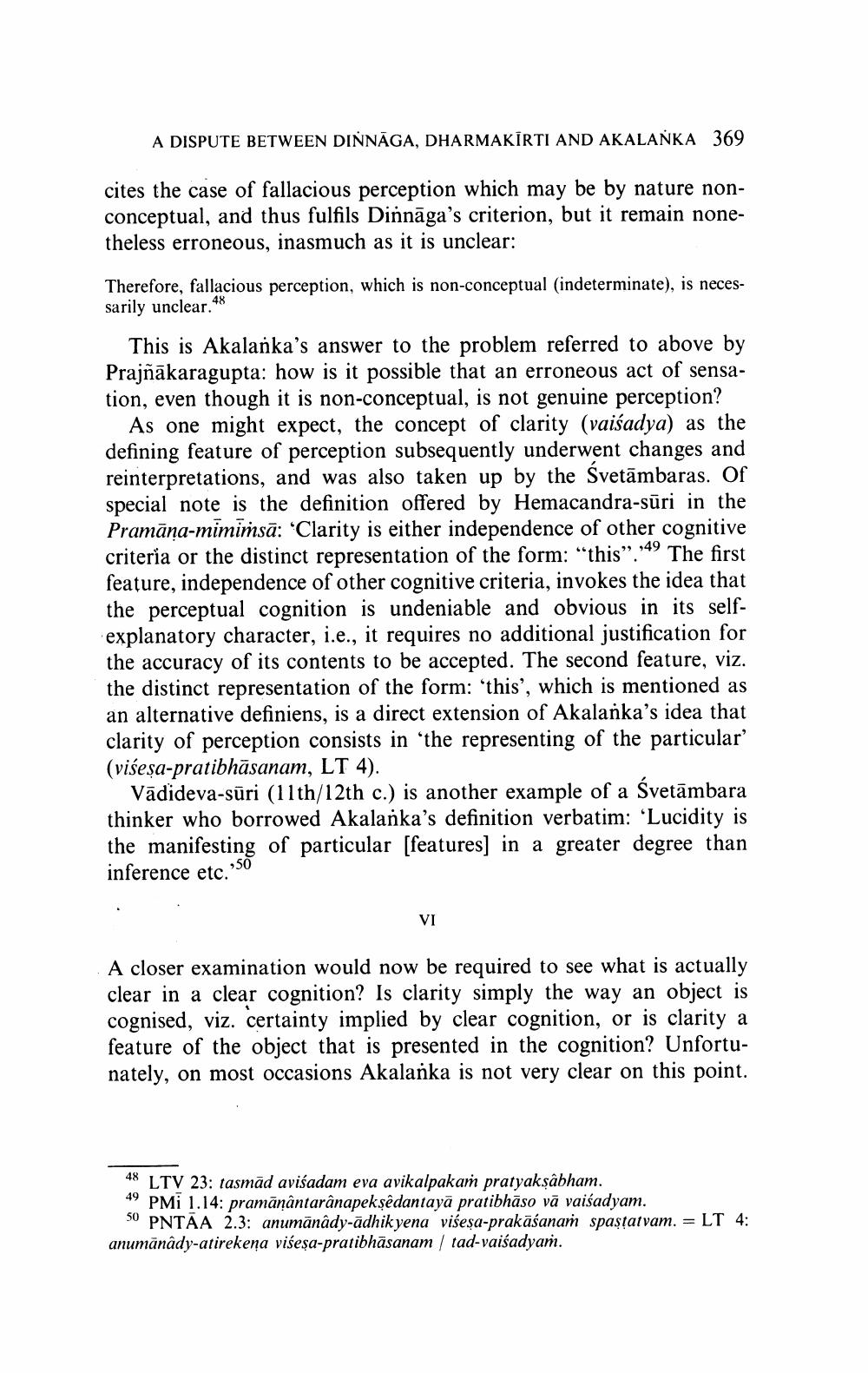________________
A DISPUTE BETWEEN DINNAGA, DHARMAKIRTI AND AKALANKA 369
cites the case of fallacious perception which may be by nature nonconceptual, and thus fulfils Dinnaga's criterion, but it remain nonetheless erroneous, inasmuch as it is unclear:
Therefore, fallacious perception, which is non-conceptual (indeterminate), is necessarily unclear.48
This is Akalanka's answer to the problem referred to above by Prajñākaragupta: how is it possible that an erroneous act of sensation, even though it is non-conceptual, is not genuine perception?
,49
As one might expect, the concept of clarity (vaiśadya) as the defining feature of perception subsequently underwent changes and reinterpretations, and was also taken up by the Śvetāmbaras. Of special note is the definition offered by Hemacandra-sūri in the Pramana-mimimsa: 'Clarity is either independence of other cognitive criteria or the distinct representation of the form: "this"." The first feature, independence of other cognitive criteria, invokes the idea that the perceptual cognition is undeniable and obvious in its selfexplanatory character, i.e., it requires no additional justification for the accuracy of its contents to be accepted. The second feature, viz. the distinct representation of the form: 'this', which is mentioned as an alternative definiens, is a direct extension of Akalanka's idea that clarity of perception consists in 'the representing of the particular' (viseṣa-pratibhasanam, LT 4).
Vadideva-suri (11th/12th c.) is another example of a Śvetambara thinker who borrowed Akalanka's definition verbatim: 'Lucidity is the manifesting of particular [features] in a greater degree than
inference etc.
,50
VI
A closer examination would now be required to see what is actually clear in a clear cognition? Is clarity simply the way an object is cognised, viz. certainty implied by clear cognition, or is clarity a feature of the object that is presented in the cognition? Unfortunately, on most occasions Akalanka is not very clear on this point.
48 LTV 23: tasmad aviśadam eva avikalpakaṁ pratyakṣâbham.
49 PMI 1.14: pramāṇântarânapekṣêdantaya pratibhāso vā vaiśadyam.
50 PNTAA 2.3: anumanâdy-adhikyena viseṣa-prakāśanaṁ spaṣṭatvam. = LT 4: anumanâdy-atirekena viseṣa-pratibhasanam | tad-vaiśadyam.




